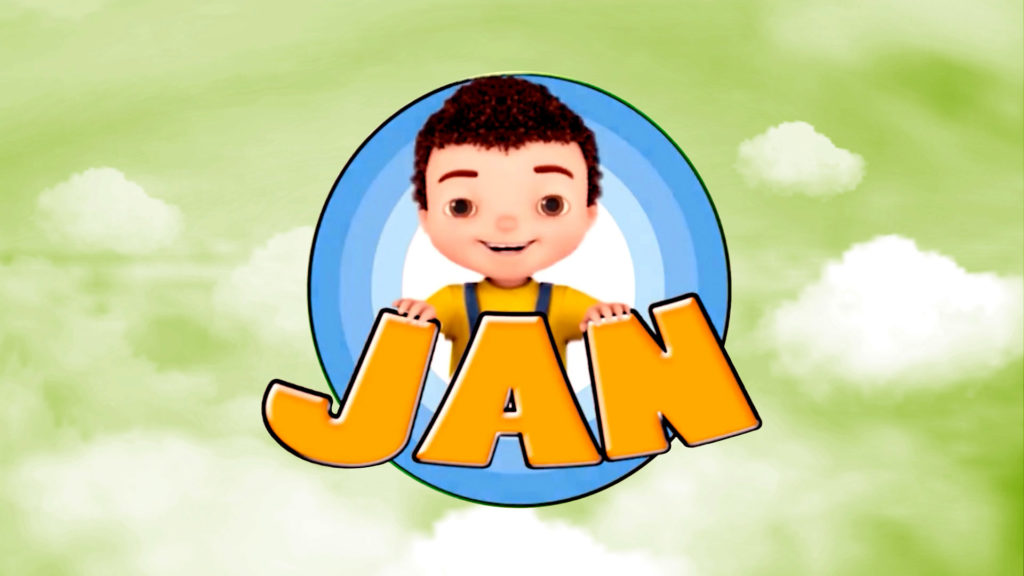Unpacking Jan 14th: What 'Jan' Really Means And More
Have you ever found yourself glancing at a calendar, perhaps on a day like Jan 14th, and just sort of wondering about those short, three-letter month names? It's a pretty common thing, actually. We see "Jan" all the time, scribbled on notes or printed on schedules, and it’s a quick way to keep track of the first month of the year. But there's a little more to this tiny abbreviation than meets the eye, isn't there? That’s what we're going to talk about here, giving you a better picture of what "Jan" really stands for and why it matters, especially as we move through the early days of a new year, like Jan 14th.
Understanding these little snippets of language, like "Jan," helps us connect with the flow of time in a much clearer way. It's not just about knowing what month it is; it's about appreciating the cleverness behind how we organize our days and weeks. This kind of abbreviation is, in a way, a small but powerful tool that makes our daily lives just a little bit simpler, allowing us to quickly jot down dates or read a schedule without much fuss. So, too it's almost, on any given day, like Jan 14th, these abbreviations play a quiet but important role.
This piece will take a gentle look at the meaning behind "Jan," exploring its origins and how it fits into the bigger picture of our calendar system. We'll also touch on some other interesting uses of "JAN" that you might not have thought about. By the time we're done, you'll have a much fuller sense of what makes a date like Jan 14th, or any other date in January, so very clear to us, and you'll likely see those calendar abbreviations with a bit more appreciation. It's actually a fascinating little bit of everyday knowledge.
Table of Contents
- Understanding "Jan": More Than Just a Month
- Beyond the Calendar: The "JAN CODE" Connection
- Why Jan 14th? A Look at the Date Itself
- Common Questions About "Jan" and Dates
Understanding "Jan": More Than Just a Month
"Jan" is, at its core, a simple shorthand. It represents the full name of the first month in our calendar, which is January. This brief form is something we often see, whether it's on a digital display, in a diary, or perhaps even on a bill. It’s a very practical way to save space and time when writing or reading dates. You know, it's just a little easier to write "Jan" than the whole word, especially when you're making a quick note, and that is pretty useful.
The use of such abbreviations is, in some respects, a testament to how we like to make things efficient. We've got twelve months in a year, and nearly all of them have a shorter version that we commonly use. "Jan" is perhaps one of the most recognized, partly because it kicks off the whole year. It's like the starting point for all our plans and resolutions, isn't it? And so, when you see Jan 14th, you immediately know we're talking about a day early in the year.
Where Does "Jan" Come From?
The name "January" itself has a really interesting story, actually. It comes from ancient Roman times, specifically from a Roman god called Janus. He was a rather unique deity, often shown with two faces. One face looked forward, gazing into the future, while the other looked back, reflecting on the past. This imagery is, in a way, just perfect for the start of a new year, isn't it? It’s a time when we naturally think about what’s ahead and what we've left behind.
This connection to Janus gives January a kind of symbolic weight. It’s not just a random name for the first month; it carries with it the idea of transitions, of beginnings and endings all rolled into one. So, when you write "Jan" or see a date like Jan 14th, you're tapping into a very old tradition that has, more or less, been with us for centuries. It's quite a neat piece of history embedded in our everyday language.
"Jan" in Everyday Use: Dates and Calendars
We use "Jan" and other month abbreviations constantly, often without even thinking about it. They are practically everywhere! You’ll spot them on calendars hanging on walls, in your phone’s scheduling app, or perhaps on tickets for an event. This widespread use makes them incredibly handy for communicating dates quickly and clearly. For instance, if you see "Jan 14th," you know exactly what day and month someone is referring to, and that is really helpful.
These short forms are particularly useful when space is a bit limited, like on a small digital display or in a tight column on a printed schedule. They allow us to convey a lot of information in a very compact way. It's a system that, frankly, just works. We’ve all learned these abbreviations early on, and they've become a sort of universal language for dates, making it easy to coordinate plans or remember important occasions, like a birthday on Jan 14th, for example.
The Broader Context: Other Month Abbreviations
While "Jan" is our focus here, it's just one part of a much larger system of month abbreviations that we use all the time. Knowing the whole set can really help you read calendars and schedules with ease. Here’s a quick look at how the other months are typically shortened, which is, you know, pretty standard across the board:
- January: Jan.
- February: Feb.
- March: Mar.
- April: Apr.
- May: May (this one is already short, so it often stays the same)
- June: Jun.
- July: Jul.
- August: Aug.
- September: Sept.
- October: Oct.
- November: Nov.
- December: Dec.
You'll often see these without the period at the end, especially in digital formats, but the core three-letter (or sometimes four-letter for September) form remains the same. Learning these is, in a way, just a basic part of being able to read and understand dates quickly. They are, quite simply, very common, and you see them on almost every calendar, which helps you keep track of things like what day Jan 14th falls on.
Beyond the Calendar: The "JAN CODE" Connection
Now, here's a rather interesting twist that takes "JAN" beyond just being a month abbreviation. You might occasionally come across "JAN CODE," and this has absolutely nothing to do with January the month. It's actually an acronym that stands for Japanese Article Number Code. This is, in essence, a type of barcode system used primarily in Japan to identify products. It’s a very important tool for managing goods and ensuring their quality and proper origin, you know, like a digital fingerprint for products.
This system, which is quite similar to the UPC barcodes we see in many other parts of the world, was first developed in Japan starting around 1974. Its purpose is to help businesses track inventory, manage sales, and basically keep the flow of goods smooth and accountable. So, if you ever see "JAN CODE" on a product, you'll know it's about product identification, not about the first month of the year. It's a completely different meaning for the same three letters, which is, admittedly, a little confusing at first, but it makes sense once you understand it. It's just another example of how abbreviations can have multiple lives, apparently.
Why Jan 14th? A Look at the Date Itself
When we talk about a specific date like Jan 14th, it’s often just one day among many in the calendar, but it carries the broader feeling of the beginning of the year. The early part of January, including the 14th, is a time when many people are still settling into new routines or working on fresh goals they set for themselves. It’s a period filled with a certain kind of energy, a sense of looking forward. You know, after the holidays, there's usually a push to get things going again, and Jan 14th is right in the middle of that initial burst.
While Jan 14th itself might not have a widely known global holiday or a specific historical event that everyone remembers, it's a date that, for many, represents a solid step into the new year. It's past the very first few days, and people are generally back in the swing of things. So, it's a day that just sort of exists within that initial push of January. It’s a typical day where life resumes its usual rhythm, and people are perhaps, still, very much focused on what they want to achieve in the coming months. It’s a good time to reflect on progress or make adjustments to those early year aspirations, actually.
Every day in January, including Jan 14th, contributes to the overall feeling of a fresh start. It’s a month of possibilities, of setting intentions, and of getting things organized. The abbreviation "Jan" helps us quickly identify this period, making it easy to mark our calendars for appointments, deadlines, or even just to remember when a friend's birthday might be. It’s all part of the larger system that helps us manage our time effectively, and that is pretty important for everyone. Learn more about how dates shape our lives on our site, and perhaps you'll find some interesting ways to mark your own calendar. It's a topic that, you know, touches everyone.
Common Questions About "Jan" and Dates
What does "Jan" mean?
"Jan" is the widely used abbreviation for January, which is the very first month of the calendar year. It's a short and sweet way to refer to that particular month, making it easier to write and read dates quickly. You'll see it a lot, for example, on calendars or when someone writes down a date like Jan 14th. It's just a common way to shorten the full name, which is, you know, pretty convenient.
What are the abbreviations for all 12 months?
Certainly! Here are the common abbreviations for all twelve months of the year: Jan. (January), Feb. (February), Mar. (March), Apr. (April), May (May), Jun. (June), Jul. (July), Aug. (August), Sept. (September), Oct. (October), Nov. (November), and Dec. (December). These are, more or less, the standard forms you’ll come across, making it quite simple to understand any date you see written down. They are, actually, very helpful for quick notes.
Why is January the first month?
January became the first month in our calendar system largely due to ancient Roman traditions. It was named after Janus, the Roman god of beginnings, transitions, and endings. He was often depicted with two faces, one looking to the past and one to the future, which, you know, makes him a really fitting figure for the start of a new year. This symbolism made January the natural choice to kick off the calendar, and it's been that way for a very long time, essentially setting the stage for every Jan 14th that follows. For more details on the history of calendars, you might want to check out this resource: Britannica's Calendar entry. It's a rather interesting read, too.
We hope this has given you a clearer picture of what "Jan" means and how it fits into our daily lives, especially when we talk about a specific day like Jan 14th. It’s amazing how much meaning can be packed into just three letters, isn't it? If you're keen to explore more about how we mark time and organize our world, you can always find more fascinating topics on our site. We're always looking at the little things that make a big difference in our understanding of the world, and this is, quite honestly, one of them.

The Disturbing Jan Theory That Would Change Everything About The Office

Jan & Dean's Golden Hits, Vol. 1 - Album by Jan & Dean - Apple Music

Turkish Drama Series that you can’t ignore